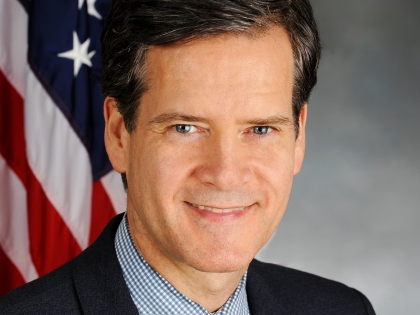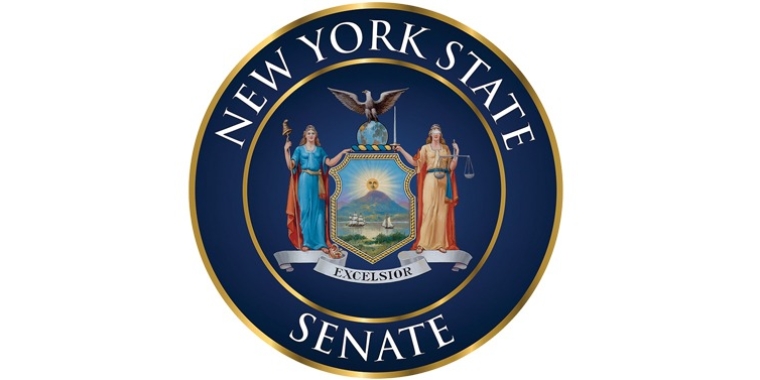
The Villager Op-Ed: Giving the public a real say on NYCHA infill plan
May 30, 2013 : By Brad Hoylman and Brian Kavanagh
Leasing off the basketball courts of low-income New Yorkers to build luxury apartments might sound extreme, but that’s among the proposals by the New York City Housing Authority to raise revenue.
Earlier this year, NYCHA announced it was targeting 14 sites, including parking lots, playgrounds and even a community center, in eight Manhattan public housing developments for so-called “infill development,” in order to raise about $50 million annually and help close gaps in its capital budget. Subject only to the approval of the U.S. Department of Housing and Urban Development, the authority plans to lease the sites to private developers for the construction of new high-rise apartment towers in which 80 percent of the units would be market rate.
There’s no doubt that NYCHA is in financial trouble. The authority predicts that its unmet capital needs will more than double to $13.4 billion over the next five years. Its operations budget has been underfunded by $750 million in the past decade. And we’re already seeing the effects — in staff layoffs, youth and community center closures, and multi-year lag times in critical apartment repairs. Residents regularly call our offices seeking help in cutting through red tape on maintenance requests; certainly NYCHA needs to manage its resources better and expedite critical repairs, but there’s no denying that money plays a role in these issues.
Is the infill plan the best option for ameliorating NYCHA’s financial problems? It certainly isn’t the only option. Currently, the city requires NYCHA to pay $100 million a year for police, sanitation and property taxes that are not imposed on other public agencies or low-income housing providers. Whether or not infill development goes forward, these payments — twice the amount of revenue the proposed infill might generate — should be eliminated.
And on its own terms, the infill development plan raises many questions that have yet to be answered. Since the beginning of the year, NYCHA officials have met with elected officials, tenant associations and the broader public to pitch the proposal. But these pitches have been scant on details and heavy on emotional appeals. Rather than discussing specifics about the proposed new residential towers, the presentations have focused primarily on the housing authority’s dire need for cash.
NYCHA officials have also made informal promises to residents of affected developments that revenue collected from infill development would be used to make repairs to their developments before being allocated to public housing in other parts of the city, though no funding ratio has been defined. There have also been promising ideas about improving security and energy resiliency for residents — an issue that especially resonates on the Sandy-ravaged Lower East Side — but again, there are as yet no details available about how this would be accomplished.
What’s missing in the infill process is a public forum in which fundamental questions can be addressed and authoritatively answered. Do New Yorkers believe that infill development with mostly market-rate housing is the best use of scarce public land? Would public housing residents, and New York as a whole, get the best possible deal under current plans? What would be required of developers to ensure that any new residential towers are designed with the concerns of the surrounding communities in mind? Even if we conclude infill can go forward at some sites, which ones make sense and with what conditions or limitations?
Residents have alternately crowded into community rooms seeking answers at so-called “engagement meetings” and boycotted these same meetings upon hearing from others that the authority isn’t approaching them as honest brokers truly interested in resident input. Many have complained that direct questions to the housing authority have either been ignored or — worse — challenged. For example, one NYCHA official responded to a question at a recent Campos Plaza meeting with this retort: “Come up with a better idea or shut up.”
We have suggested improvements to this process, such as it is, and NYCHA has accepted some of them. And the Assembly and the City Council have both held public hearings that have been informative. But here’s a big idea for NYCHA: Subject the infill plan to New York City’s formal land use review process, which ensures transparency and accountability and results in proposals that are better for both developers and the communities in which they build — if and when projects are approved.
The Uniform Land Use Review Procedure (ULURP) includes many checks and balances for major land use actions, including environmental impact studies, a formal role for community boards, the borough president and the City Planning Commission, and a binding decision by the City Council approving or disapproving each project. In fact, any redevelopment of public land owned by a city agency is already subject to ULURP. But because NYCHA is not technically a city agency — it was created by state law — the authority is not currently bound by the same requirement.
That is why we are sponsoring the “NYCHA Real Property Public Review Act,” which would require that any disposition of land or buildings by NYCHA be subject to ULURP. With the leadership of Assembly prime sponsor and Housing Committee Chairperson Keith Wright, City Council Speaker Christine Quinn and Council Public Housing Committee Chairperson Rosie Mendez, and the support of other local officials who have played an active role in the infill debate, like state Senator Daniel Squadron and Councilmember Margaret Chin, this legislation would help ensure that residents of public housing and surrounding communities can help shape the future of their neighborhoods through a fair and transparent process.
With both clear timelines and requisite opportunities for public input, ULURP would provide the authority with a clear and well-trodden path for community engagement from the ground up. The ULURP process will also enable public housing residents to avail themselves of the same community planning resources that residents of private housing use to evaluate and weigh in on major land use actions. It will bring NYCHA in line with other mayoral agencies, and ensure that the City Council has binding authority in this extremely consequential privatization of publicly owned land.
The need for this legislation is clear. According to an August 2008 report by Manhattan Borough President Scott Stringer entitled, “Land Rich, Pocket Poor,” there are 30.5 million square feet of unused development rights in NYCHA developments throughout Manhattan alone. In other words, there might not be any plan for infill development in your backyard yet, but with all those unused air rights, such a plan may not be too far off.
With 630,000 public housing residents and Section 8 recipients, NYCHA is the largest public housing authority in the country and the largest landlord in New York City; it is also one of the oldest, with some buildings nearing 80 years old. To serve all of these people, and maintain these aging buildings, there’s no question that NYCHA needs more money. But it also needs the support of residents, and the partnership of their communities, to tackle the challenges of preserving and expanding affordable housing in the 21st century.
Infill development has the potential to generate some revenue to pay for long-overdue capital projects — but at what cost to NYCHA’s relationship with its residents and neighborhood stakeholders? NYCHA will only score a win for the communities it serves by giving them a say and adhering to the standard public review process required of every other developer in the city. It’s about more than just basketball courts, playgrounds and community centers. The integrity of community-based planning is at stake.
Hoylman is state senator for the 27th District; Kavanagh is assemblymember for the 74th District
